Table of Contents
Introduction
Massage therapy is a practice that involves the manipulation of soft tissues in the body, including muscles, connective tissues, tendons, ligaments, and skin. It is performed by trained professionals, known as massage therapists, who use their hands, fingers, elbows, forearms, and sometimes even feet to apply pressure to the body. The techniques can vary widely and may include stroking, kneading, tapping, and stretching. Massage therapy is used for a variety of health-related purposes, including to relieve pain, rehabilitate sports injuries, reduce stress, increase relaxation, address anxiety and depression, and aid general wellness. It has been practiced in various forms for thousands of years by many cultures, with numerous traditional and modern variations.
The Benefits of Regular Massage Therapy for Stress Relief
Title: Massage Therapy
In the hustle and bustle of modern life, stress has become a common companion for many. The relentless pace of work, social obligations, and personal challenges can lead to a state of chronic tension that affects both mind and body. Amidst this backdrop, massage therapy emerges as a beacon of relief, offering a respite from the daily grind and a host of benefits that extend well beyond the immediate pleasure of relaxation.
Massage therapy, an ancient practice that has been refined over millennia, involves the manipulation of soft tissues in the body, such as muscles, connective tissues, tendons, ligaments, and skin. By employing a variety of techniques, massage therapists work to alleviate tension, improve circulation, and promote overall wellness. The benefits of regular massage therapy, particularly for stress relief, are manifold and supported by a growing body of scientific research.
One of the primary advantages of massage therapy is its ability to reduce the production of cortisol, the body’s primary stress hormone. High levels of cortisol can lead to a plethora of health issues, including sleep disturbances, weight gain, and a weakened immune system. By lowering cortisol levels, massage therapy can help mitigate these adverse effects, fostering a sense of calm and improving the body’s resilience to stress.
Furthermore, massage therapy stimulates the release of endorphins, the body’s natural painkillers and mood elevators. This release can lead to an immediate sense of well-being, reducing feelings of anxiety and depression that often accompany stress. The soothing touch of a skilled therapist can also promote relaxation by engaging the parasympathetic nervous system, which helps the body to rest and digest, counteracting the fight-or-flight response that is typically triggered by stress.
Regular massage therapy sessions have been shown to improve sleep quality, which is often compromised by stress. Better sleep not only helps in reducing stress levels but also enhances the body’s ability to repair and rejuvenate itself. This improved rest can lead to increased energy levels and a more positive outlook on life, making it easier to tackle daily challenges without becoming overwhelmed.
In addition to these psychological benefits, massage therapy offers physical relief from the symptoms of stress. Chronic stress often manifests as muscle tension, particularly in the neck, shoulders, and back. Through targeted techniques, massage therapy can help to release this tension, alleviating pain and improving mobility. This physical easing of the body’s stress responses can further contribute to a sense of relaxation and well-being.
Moreover, the benefits of massage therapy extend to the cardiovascular system. Regular sessions can lead to lower blood pressure and heart rate, reducing the risk of heart disease, which can be exacerbated by chronic stress. By promoting circulation, massage therapy ensures that oxygen and nutrients are efficiently distributed throughout the body, supporting overall health and vitality.
In conclusion, the benefits of regular massage therapy for stress relief are comprehensive, addressing both the psychological and physiological impacts of stress. By incorporating massage therapy into a regular self-care routine, individuals can create a powerful ally in their quest for a balanced and healthy life. As the pressures of the modern world continue to mount, the timeless practice of massage therapy stands out as an effective tool for maintaining equilibrium and fostering a sense of peace in an otherwise chaotic world.
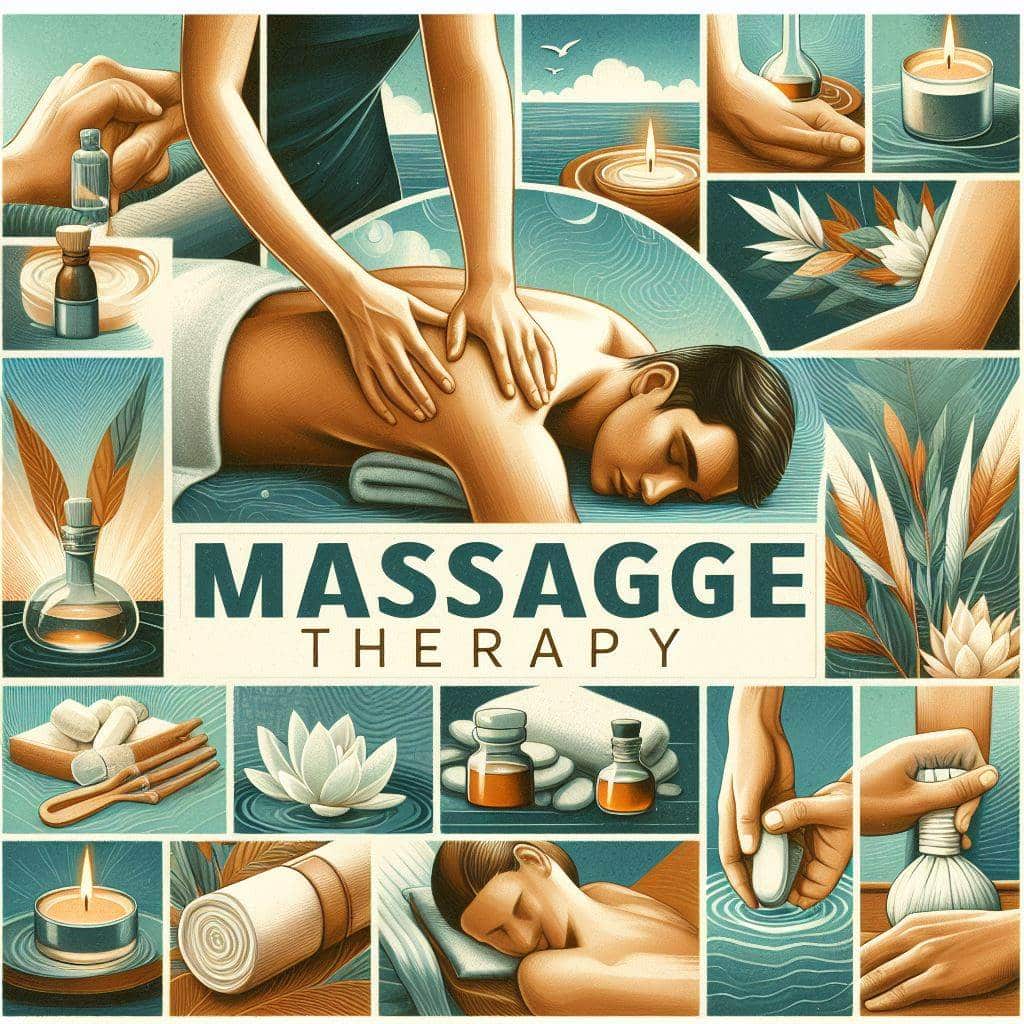
Understanding Different Massage Therapy Techniques and Their Uses
Massage therapy is an ancient practice that has evolved over thousands of years, offering a plethora of techniques to aid in healing, relaxation, and the enhancement of overall well-being. As the understanding of the human body and its complex systems has deepened, so too has the sophistication of massage therapy methods. These techniques vary widely in their approach, pressure, and intended use, each designed to target specific issues or promote general health.
One of the most widely recognized forms of massage therapy is Swedish massage, known for its gentle and relaxing nature. This technique employs long, flowing strokes, kneading, and circular movements on superficial layers of muscle using massage oil or lotion. Swedish massage is particularly beneficial for improving circulation, easing muscle tension, and promoting relaxation. It serves as an excellent introduction for those new to massage therapy, providing a soothing experience that eases the body and mind into a state of tranquility.
In contrast to the gentle approach of Swedish massage, deep tissue massage applies firm pressure and slow strokes to reach deeper layers of muscle and fascia. This technique is often recommended for individuals with chronic pain, muscle tightness, or those recovering from injuries. By targeting connective tissue, deep tissue massage works to break up scar tissue and physically break down muscle “knots” or adhesions that can disrupt circulation and cause pain, limited range of motion, and inflammation.
Another specialized form of massage therapy is sports massage, which caters to the needs of athletes and those with active lifestyles. This technique focuses on areas of the body that are overused and stressed from repetitive and often aggressive movements. Sports massage can be used as a means to enhance pre-event preparation, reduce recovery time for maximum performance during training or after an event, and aid in the rehabilitation of sports injuries. By incorporating stretching, sports massage improves flexibility and endurance, helps prevent injuries, and prepares the body and mind for optimal performance.
Reflexology, a unique method of massage therapy, is based on the principle that there are reflex points on the feet, hands, and head linked to every part of the body. By applying pressure to these reflex areas, a reflexologist can stimulate organs and systems throughout the body. This technique is said to promote healing, alleviate stress, and improve circulation and digestion. Reflexology is often sought for its ability to relieve tension headaches, digestive disorders, and other stress-related conditions.
For those seeking relief from the discomfort associated with pregnancy, prenatal massage is tailored specifically to the needs of expectant mothers. This form of therapy aims to reduce stress, decrease swelling in the arms and legs, and relieve aches and pains in muscles and joints. It is important that prenatal massage is performed by a therapist specifically trained in this technique to ensure the safety and comfort of both mother and child.
Lastly, trigger point therapy is a massage technique that involves the application of pressure to tender muscle tissue in order to relieve pain and dysfunction in other parts of the body. Sometimes massage and pressure are not enough, and other techniques, including stretching and muscle energy techniques, are used to relieve the discomfort.
In conclusion, massage therapy encompasses a diverse range of techniques, each with its own specific benefits and uses. Whether one seeks relaxation, pain relief, injury rehabilitation, or stress reduction, there is a massage therapy technique that can address their needs. By understanding the different methods and their applications, individuals can make informed decisions about which type of massage therapy will best support their health and well-being. As always, it is recommended to consult with a professional massage therapist to determine the most appropriate technique for one’s particular circumstances.
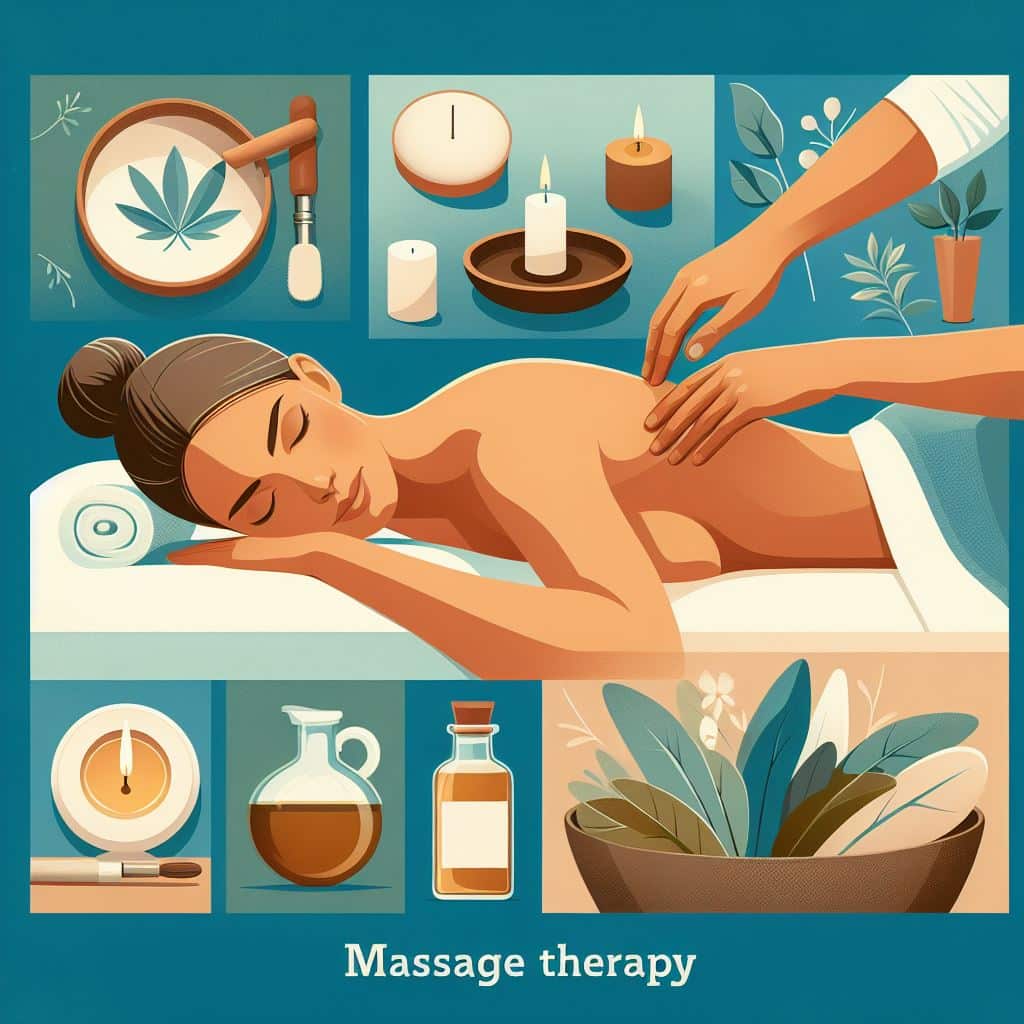
How Massage Therapy Can Enhance Athletic Performance and Recovery
Massage therapy, long revered for its ability to alleviate stress and tension, has emerged as a vital component in the realm of sports, enhancing athletic performance and expediting recovery. Athletes across the spectrum, from weekend warriors to elite professionals, are increasingly incorporating massage into their training regimens, not merely as a means to relax but as a strategic tool to gain a competitive edge.
The physical demands of athletic training and competition can lead to the accumulation of stress and tension in the muscles, often manifesting as stiffness, soreness, and a decreased range of motion. Massage therapy addresses these issues directly, employing techniques that promote circulation, enhance flexibility, and reduce muscle fatigue. Improved circulation is paramount for athletes, as it facilitates the delivery of oxygen and nutrients to muscle tissues, which is essential for repair and growth. By augmenting blood flow, massage not only nourishes these tissues but also aids in the removal of metabolic waste products such as lactic acid, which can accumulate during intense physical activity and contribute to muscle soreness.
Flexibility is another critical factor in athletic performance, influencing the ability to execute movements with precision and power. Massage therapy works to elongate muscle fibers, increase joint mobility, and decrease the risk of injury by preventing the development of adhesions and reducing overall muscle tension. This enhanced flexibility can lead to improvements in performance, as athletes are able to move more freely and with greater ease, allowing for more efficient and effective movement patterns.
Moreover, the psychological benefits of massage should not be underestimated. The calming effect of massage can lower stress levels and reduce the production of cortisol, a hormone associated with stress. This relaxation response can improve focus and concentration, enabling athletes to maintain a clear mind and stay mentally sharp during both training and competition. The reduction in stress and anxiety also contributes to better sleep quality, which is crucial for recovery and performance. Adequate rest is essential for the body to repair itself, and athletes who receive regular massages often report improved sleep patterns.
In the context of recovery, massage therapy plays a pivotal role in helping athletes bounce back from the rigors of their sport. By alleviating muscle soreness and accelerating the healing process, massage enables athletes to return to training sooner and with less discomfort. This is particularly beneficial during periods of intense training or following competitions, where quick recovery is necessary to maintain a high level of performance.
In conclusion, massage therapy is a multifaceted tool that can significantly enhance athletic performance and recovery. By improving circulation, flexibility, and psychological well-being, and by aiding in the recovery process, massage offers a holistic approach to athletic care. Athletes who integrate massage into their training programs may find that they are not only able to perform at higher levels but also able to do so with greater consistency and fewer injuries. As the understanding of the benefits of massage therapy continues to grow, it is likely that its use among athletes will become even more prevalent, solidifying its status as an indispensable element of modern sports training.
The Role of Massage Therapy in Managing Chronic Pain
Massage therapy, an ancient practice that has evolved through centuries, stands today as a widely recognized component of complementary and alternative medicine. Its role in managing chronic pain, a condition that affects millions worldwide, is of particular significance. Chronic pain, defined as pain persisting for more than three months, can be debilitating, impacting an individual’s quality of life, mental health, and overall well-being. In this context, massage therapy emerges as a non-invasive, holistic approach that can offer relief and contribute to long-term pain management.
The mechanisms through which massage therapy alleviates pain are multifaceted. Primarily, it targets the muscular system, where chronic tension and knots can lead to persistent discomfort. Through various techniques, including kneading, tapping, and stroking, massage therapists work to release muscle tension, thereby reducing pain. This physical manipulation of soft tissues enhances blood circulation, which facilitates the delivery of oxygen and nutrients to sore muscles, promoting healing and reducing the sensation of pain.
Moreover, massage therapy has a profound effect on the body’s nervous system. It can stimulate the release of endorphins, the body’s natural painkillers, which help to diminish the perception of pain. Additionally, massage can reduce the level of stress hormones like cortisol, which not only contributes to relaxation but also helps in mitigating the inflammatory response often associated with chronic pain conditions.
The psychological benefits of massage therapy are equally noteworthy. Chronic pain can lead to a vicious cycle of discomfort and stress, which in turn can exacerbate pain. By promoting relaxation and reducing stress, massage therapy can interrupt this cycle, providing a sense of relief and improving the psychological state of individuals dealing with chronic pain. This improvement in mental health can be a crucial factor in the overall pain management strategy, as a positive outlook and reduced stress levels can significantly influence one’s experience of pain.
Furthermore, massage therapy can be tailored to the specific needs of individuals, making it a versatile tool in managing various types of chronic pain, such as fibromyalgia, arthritis, and back pain. Therapists can adjust the pressure, technique, and focus areas to address the unique pain patterns and sensitivities of each person. This personalized approach not only enhances the effectiveness of the therapy but also ensures that it is a safe option for those who may have limitations or contraindications for other forms of pain management.
It is important to note that while massage therapy can be a powerful ally in the battle against chronic pain, it is most effective when integrated into a comprehensive pain management plan. This plan may include other modalities such as physical therapy, medication, and lifestyle changes. Collaboration with healthcare professionals ensures that massage therapy complements other treatments and contributes to a holistic approach to pain management.
In conclusion, the role of massage therapy in managing chronic pain is multifaceted and significant. By addressing both the physical and psychological aspects of pain, it offers a non-invasive, therapeutic option that can improve quality of life for those suffering from chronic conditions. As research continues to uncover the complexities of pain and the benefits of massage therapy, it is likely that this ancient practice will remain an integral part of modern pain management strategies.
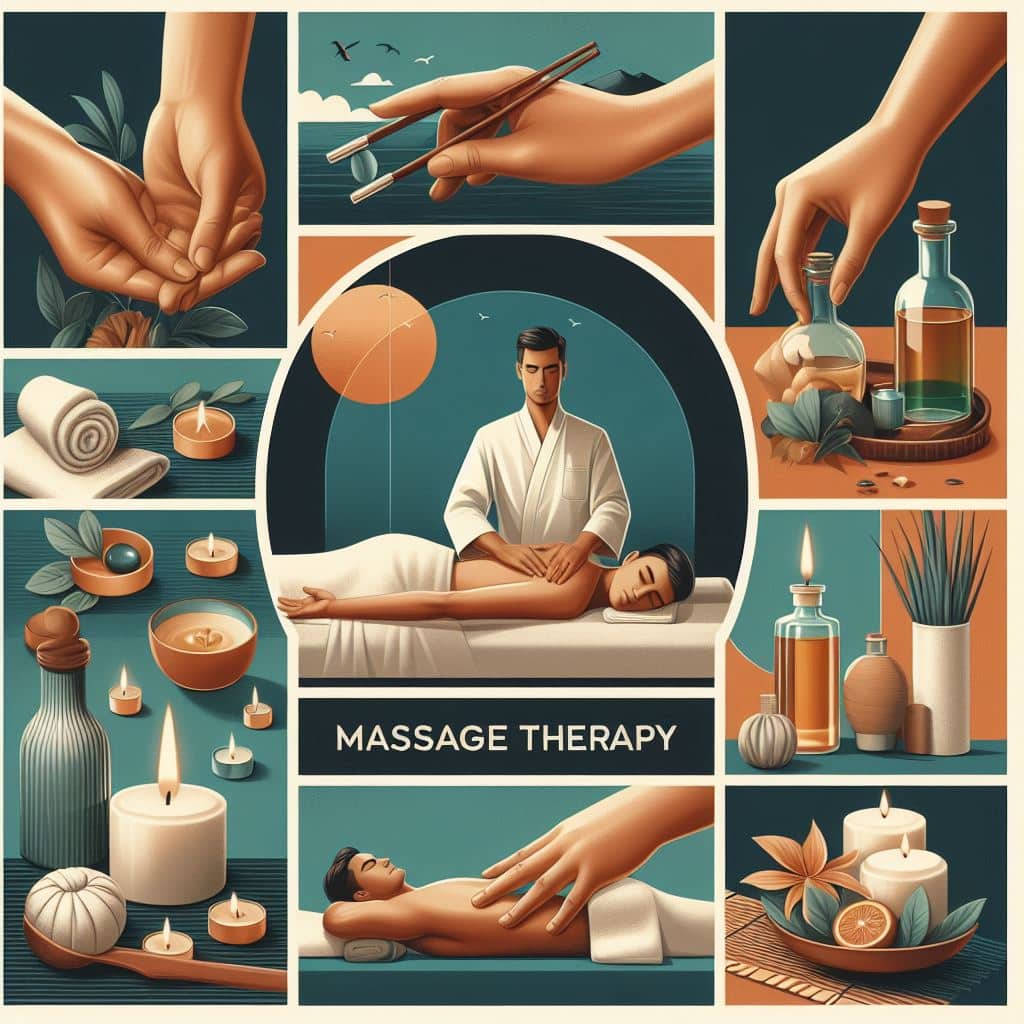
Integrating Massage Therapy into Your Wellness Routine
Integrating Massage Therapy into Your Wellness Routine
In the pursuit of optimal health and well-being, individuals often explore various modalities to enhance their wellness routine. Among these, massage therapy stands out as a time-honored practice that not only offers relaxation but also boasts a multitude of health benefits. By incorporating massage therapy into one’s regular wellness regimen, one can unlock a host of therapeutic advantages that contribute to a more balanced and harmonious life.
Massage therapy, at its core, involves the manipulation of soft tissues in the body, including muscles, connective tissues, tendons, ligaments, and skin. Professional therapists apply various techniques, using their hands, fingers, elbows, or sometimes even tools, to knead and rub the body’s tissues. This process is not merely about inducing relaxation; it is a strategic approach to improving physical and mental health.
One of the primary benefits of massage therapy is its ability to alleviate stress and reduce anxiety. In today’s fast-paced world, stress has become a common affliction, with far-reaching implications for health. Massage therapy activates the body’s relaxation response, which in turn decreases the production of stress hormones, such as cortisol. As these hormone levels drop, the body experiences a calming effect, which can lead to improved mood and a reduction in anxiety symptoms.
Moreover, massage therapy has been shown to have a positive impact on physical health. It can improve blood circulation, which is essential for the delivery of oxygen and nutrients to the body’s cells. Enhanced circulation also aids in the removal of waste products and toxins from the body, promoting detoxification and improving overall bodily function. Additionally, massage can help to relieve muscle tension and stiffness, providing relief from pain and discomfort associated with overuse or injury. This can be particularly beneficial for those who lead active lifestyles or suffer from chronic pain conditions.
The versatility of massage therapy allows it to be tailored to individual needs. For instance, athletes may opt for sports massage to enhance performance and expedite recovery, while someone with a sedentary job might choose a Swedish massage to counteract the effects of prolonged sitting. There are also specialized forms of massage, such as prenatal massage for expectant mothers and geriatric massage for older adults, each designed to address the unique challenges of these life stages.
Furthermore, massage therapy can complement other wellness practices, such as exercise and healthy eating. When combined with regular physical activity, massage can help to prevent injuries and promote faster recovery times. It can also be a valuable component of a holistic approach to health, working in conjunction with nutritional plans to maximize the body’s healing potential.
To integrate massage therapy into your wellness routine, it is important to consider your personal health goals and preferences. Consulting with a licensed massage therapist can help you determine the type and frequency of massage that would be most beneficial for you. Whether it’s a weekly session to manage stress or a bi-monthly treatment to address a specific health concern, establishing a consistent schedule can enhance the therapeutic effects of massage.
In conclusion, massage therapy is a powerful tool in the arsenal of wellness practices. Its ability to promote relaxation, improve circulation, relieve pain, and complement other health-promoting activities makes it an invaluable addition to any wellness routine. By mindfully incorporating massage therapy into your life, you can take a proactive step towards achieving a more balanced and healthy existence.
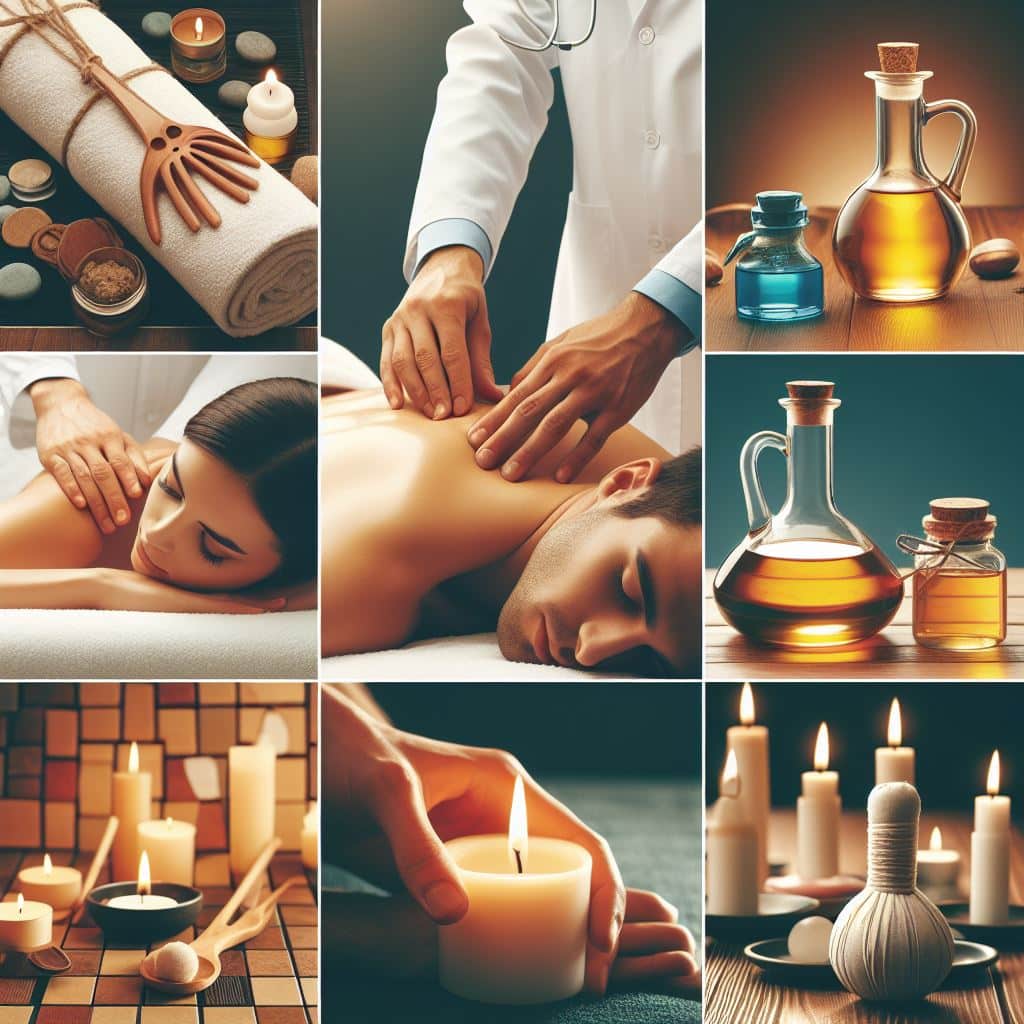
The Science Behind Massage Therapy: How It Affects the Body
Massage therapy, an ancient practice that has been refined over millennia, is now recognized not only for its relaxing qualities but also for its significant health benefits. The science behind massage therapy reveals a complex interaction between the body’s nervous, muscular, and circulatory systems, which contributes to its overall therapeutic effects.
At the core of massage therapy’s benefits is its ability to reduce stress and promote relaxation. When a massage therapist applies pressure to the muscles, it stimulates the parasympathetic nervous system, which is responsible for the body’s rest and digest functions. This stimulation leads to a decrease in the production of stress hormones such as cortisol, thereby inducing a state of calmness and relaxation. As the body relaxes, heart rate and blood pressure decrease, which in turn can help to alleviate the symptoms of stress-related conditions such as anxiety and insomnia.
The manipulation of soft tissues during a massage also has a direct impact on the muscular system. By kneading and stretching muscles, massage therapy can relieve tension and reduce muscle stiffness. This process not only helps to alleviate pain but also improves flexibility and range of motion. Moreover, the mechanical action of massage promotes increased blood flow to the muscles, which enhances the delivery of oxygen and nutrients while aiding in the removal of waste products such as lactic acid. This improved circulation can accelerate the healing process of injured tissues and reduce recovery time after physical exertion.
Another significant aspect of massage therapy is its effect on the body’s production of endorphins, which are natural painkillers and mood elevators. The tactile stimulation provided by a massage activates sensory receptors in the skin, which in turn signal the brain to release these feel-good chemicals. The increase in endorphin levels not only helps to reduce the perception of pain but also contributes to a sense of well-being.
Furthermore, massage therapy has been shown to have an immunomodulatory effect. Research suggests that massage can increase the activity of white blood cells, which play a crucial role in defending the body against disease. This enhancement of the immune system’s function can be particularly beneficial during periods of stress or illness when the body is more vulnerable to infection.
The lymphatic system, responsible for removing toxins and waste from the body, also benefits from massage therapy. The gentle pressure and rhythmic movements of certain massage techniques can stimulate lymph flow, helping the body to detoxify more efficiently. This is particularly important for individuals who lead sedentary lifestyles or those recovering from surgery, as it can help prevent lymphatic congestion and the associated health issues.
In conclusion, the science behind massage therapy provides a clear understanding of how this ancient practice can have profound effects on the body. By engaging various physiological systems, massage therapy not only offers a respite from the stresses of daily life but also supports the body’s natural healing processes. Whether seeking relief from chronic pain, looking to improve athletic performance, or simply aiming to maintain good health, individuals can benefit from the multifaceted effects of massage therapy. As research continues to uncover the mechanisms behind these benefits, the integration of massage therapy into healthcare practices is likely to expand, offering a complementary approach to wellness that is both scientifically grounded and holistically oriented.
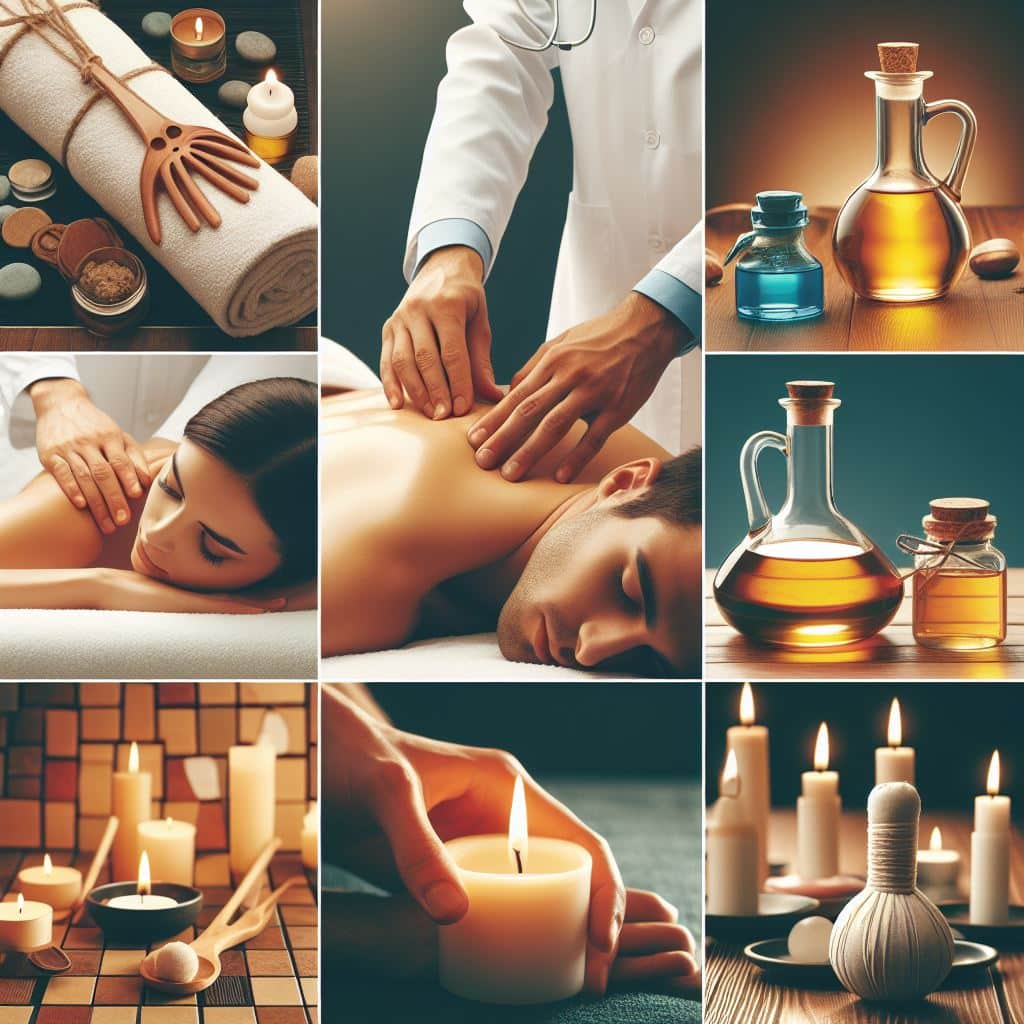
Massage Therapy for Improving Sleep Quality and Insomnia
Massage Therapy for Improving Sleep Quality and Insomnia
In the hustle and bustle of modern life, sleep disorders such as insomnia have become increasingly common, affecting a significant portion of the population. The quest for a good night’s sleep has led many to explore various remedies, with massage therapy emerging as a promising solution. This therapeutic approach not only offers relaxation but also has been shown to improve sleep quality, making it a valuable tool for those struggling with sleep-related issues.
The connection between massage therapy and sleep improvement is rooted in the body’s response to touch and the subsequent physiological changes that promote relaxation. Massage techniques, such as Swedish or deep tissue, are designed to reduce muscle tension, improve circulation, and stimulate the parasympathetic nervous system. This “rest and digest” response counteracts the body’s stress response, characterized by the “fight or flight” mechanism, which can be a significant barrier to restful sleep.
One of the primary benefits of massage therapy is its ability to lower cortisol levels, the stress hormone that can keep the body in a heightened state of alertness. By decreasing cortisol and increasing serotonin and dopamine, neurotransmitters associated with feelings of well-being, massage can create an environment conducive to sleep. This hormonal rebalancing is particularly beneficial for those who suffer from insomnia, as it helps to regulate sleep patterns and encourages the onset of sleep.
Furthermore, massage therapy has been found to increase delta waves in the brain, which are linked to deep sleep. This suggests that individuals who receive regular massages may not only fall asleep more easily but also experience more restorative sleep. The deep relaxation achieved during a massage session can also alleviate other conditions that often accompany insomnia, such as anxiety and depression, both of which can further disrupt sleep.
For individuals with chronic pain, massage therapy offers an additional layer of benefit. Pain can be a significant obstacle to sleep, and by addressing the source of discomfort, massage can facilitate a more comfortable and uninterrupted rest. Techniques such as trigger point therapy and myofascial release can be particularly effective in managing pain, thereby improving sleep quality for those affected by conditions like arthritis or fibromyalgia.
It is important to note that while massage therapy can be a powerful aid in improving sleep, it should be considered as part of a holistic approach to sleep hygiene. Factors such as a consistent sleep schedule, a comfortable sleep environment, and avoidance of stimulants before bedtime are also crucial in combating insomnia. Incorporating massage therapy into a comprehensive sleep strategy can amplify its benefits and lead to more significant improvements in sleep quality.
In conclusion, massage therapy stands out as a natural and non-pharmacological intervention for enhancing sleep quality and alleviating insomnia. Through its ability to induce relaxation, balance hormones, and address pain, massage offers a multifaceted approach to overcoming sleep disturbances. As research continues to shed light on the intricate relationship between massage and sleep, individuals seeking relief from insomnia may find solace in the healing touch of massage therapy. With its potential to transform the sleep experience, massage therapy is indeed a valuable ally in the pursuit of a restful and rejuvenating night’s sleep.
The Importance of Licensed Practitioners in Massage Therapy Safety
Title: The Importance of Licensed Practitioners in Massage Therapy Safety
Massage therapy has long been recognized for its potential to relieve stress, manage pain, improve range of motion, and enhance overall well-being. However, the benefits of massage can only be fully realized when the therapy is administered by licensed practitioners. These professionals have undergone rigorous training and certification processes to ensure they possess the necessary skills and knowledge to provide safe and effective treatment.
The journey to becoming a licensed massage therapist typically involves completing an accredited program that covers anatomy, physiology, pathology, and various massage techniques. Furthermore, candidates must pass a state or nationally recognized examination to demonstrate their proficiency. This educational foundation is crucial, as it equips therapists with a deep understanding of the human body and the intricacies of muscle and tissue manipulation.
Licensed practitioners are also well-versed in contraindications for massage, which are conditions or factors that would make certain massage techniques inadvisable or unsafe. For instance, individuals with certain health conditions, such as deep vein thrombosis or severe osteoporosis, may require modified approaches or may need to avoid massage therapy altogether. By consulting with a licensed therapist, clients can be assured that their unique health considerations are taken into account, thereby minimizing the risk of injury or adverse effects.
Moreover, licensed massage therapists are bound by a code of ethics and standards of practice that prioritize client safety and confidentiality. They are trained to create a secure and comfortable environment, ensuring that the therapeutic experience is not only beneficial but also respects the client’s personal boundaries and comfort levels. This professional conduct fosters trust and allows for open communication between the therapist and client, which is essential for tailoring the therapy to the individual’s needs and preferences.
In addition to the safety aspects, licensed practitioners are often required to engage in continuing education to keep their skills current and to stay informed about the latest research and techniques in the field of massage therapy. This commitment to ongoing learning ensures that they can offer the most effective treatments and adapt to the evolving landscape of health and wellness.
The regulatory framework that governs licensed massage therapists also serves as a safeguard for the public. State boards and professional organizations oversee the practice of massage therapy, providing a system of accountability. Clients can have peace of mind knowing that if they have concerns about the care they receive, there is a formal mechanism for addressing those issues.
In contrast, seeking massage services from unlicensed individuals can pose significant risks. Without the assurance of proper training and ethical standards, clients may be exposed to improper techniques, unsanitary conditions, or even unethical behavior. The potential for harm in such scenarios underscores the importance of choosing a licensed practitioner for massage therapy.
In conclusion, the safety and efficacy of massage therapy are heavily dependent on the expertise of licensed practitioners. Their comprehensive education, adherence to ethical standards, and commitment to client well-being are indispensable for ensuring that massage therapy is not only enjoyable but also a safe component of a holistic approach to health. As the demand for massage therapy continues to grow, the role of licensed professionals in maintaining the highest standards of practice becomes ever more critical. Clients seeking massage therapy should always verify the credentials of their therapist to ensure they are entrusting their care to a qualified and competent practitioner.
Q&A
1. **What is massage therapy?**
Massage therapy is the practice of manipulating the soft tissues of the body, including muscles, connective tissues, tendons, ligaments, and joints, to enhance a person’s health and well-being.
2. **What are the benefits of massage therapy?**
Benefits of massage therapy may include reduction of stress and anxiety, relief from pain and muscle tension, improved circulation, increased flexibility, improved sleep, and enhanced overall relaxation.
3. **What are the different types of massage therapy?**
Common types of massage therapy include Swedish massage, deep tissue massage, sports massage, reflexology, shiatsu, Thai massage, and hot stone massage.
4. **How long does a typical massage therapy session last?**
A typical massage therapy session can last anywhere from 30 minutes to 90 minutes, depending on the type of massage and the client’s preferences.
5. **Is massage therapy regulated?**
Yes, massage therapy is regulated in many jurisdictions. Therapists often need to complete a recognized training program and obtain a license or certification to practice.
6. **Can massage therapy help with specific medical conditions?**
Massage therapy can be beneficial for certain medical conditions such as chronic pain, fibromyalgia, tension headaches, and some forms of arthritis, but it should not replace conventional medical care. Always consult with a healthcare provider.
7. **Are there any risks associated with massage therapy?**
While massage therapy is generally safe, risks may include temporary discomfort, bruising, allergic reactions to oils or lotions, and in rare cases, injury. It is important to communicate with the therapist about any concerns or pre-existing conditions.
8. **How often should one get a massage?**
The frequency of massage therapy sessions varies depending on individual needs, goals, and response to treatment. Some may benefit from weekly sessions, while others may only need occasional massages for maintenance.
Conclusion
Massage therapy is a widely used treatment modality that can provide numerous benefits for both physical and mental health. It can help alleviate pain, reduce stress and anxiety, improve circulation, enhance flexibility, and promote relaxation. Regular massage sessions may contribute to a better quality of life by improving sleep, boosting immune function, and reducing the frequency of headaches. However, it is important to note that massage therapy should be performed by a trained professional and may not be suitable for everyone, especially those with certain medical conditions. It is recommended to consult with a healthcare provider before beginning any new treatment regimen.


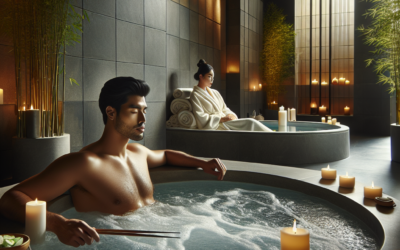
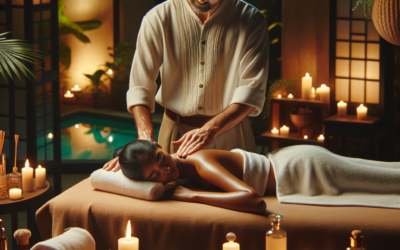
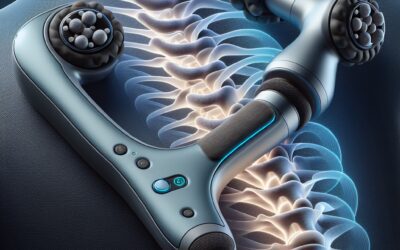
0 Comments